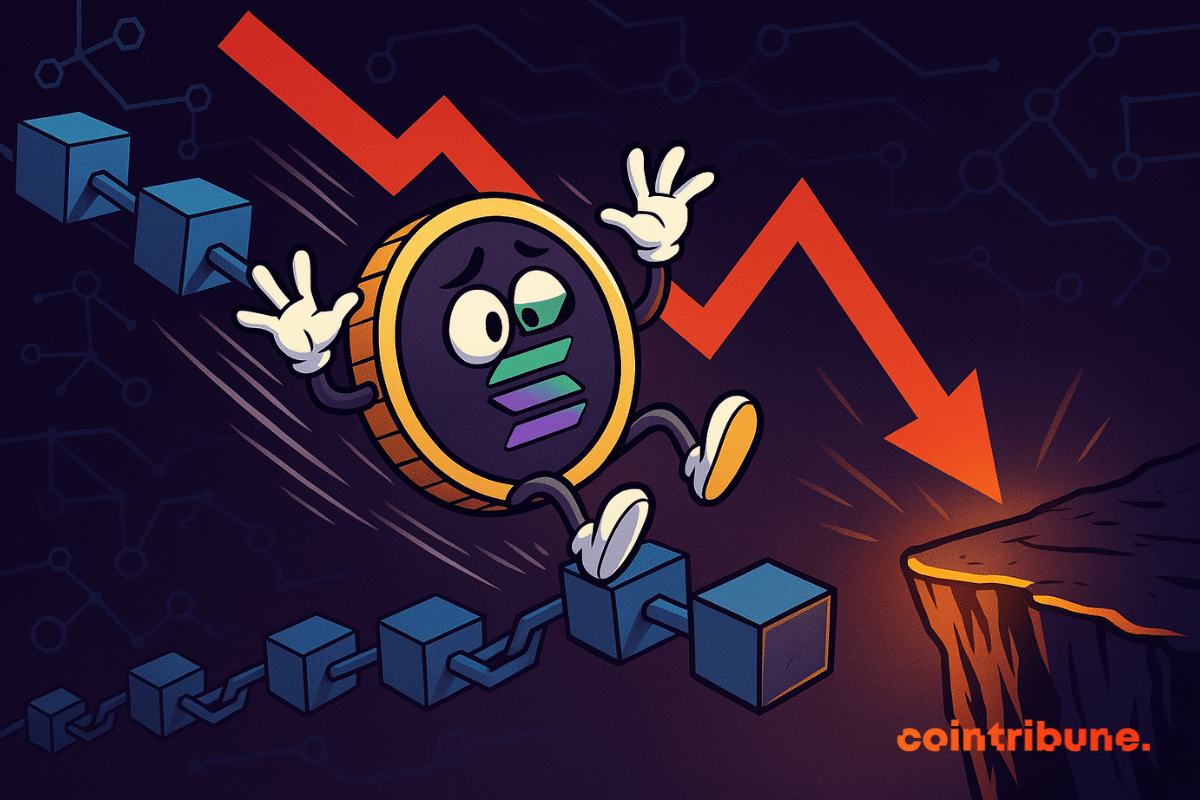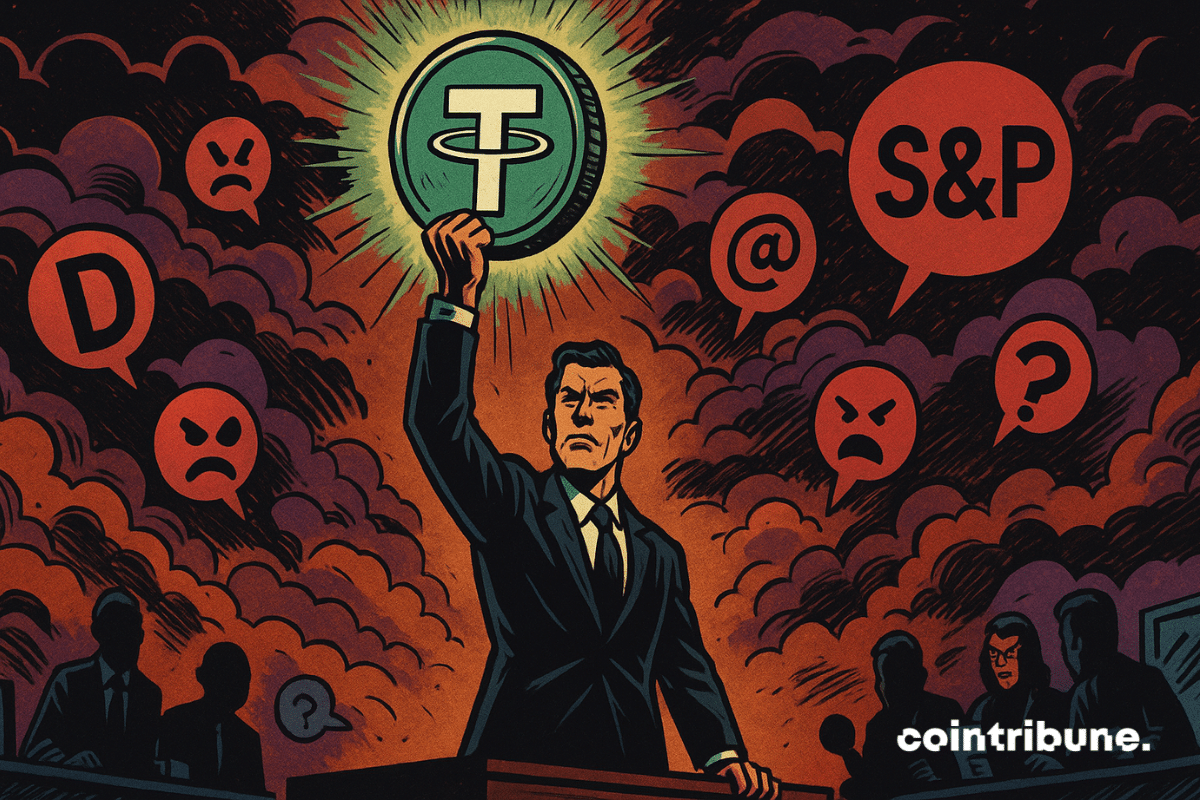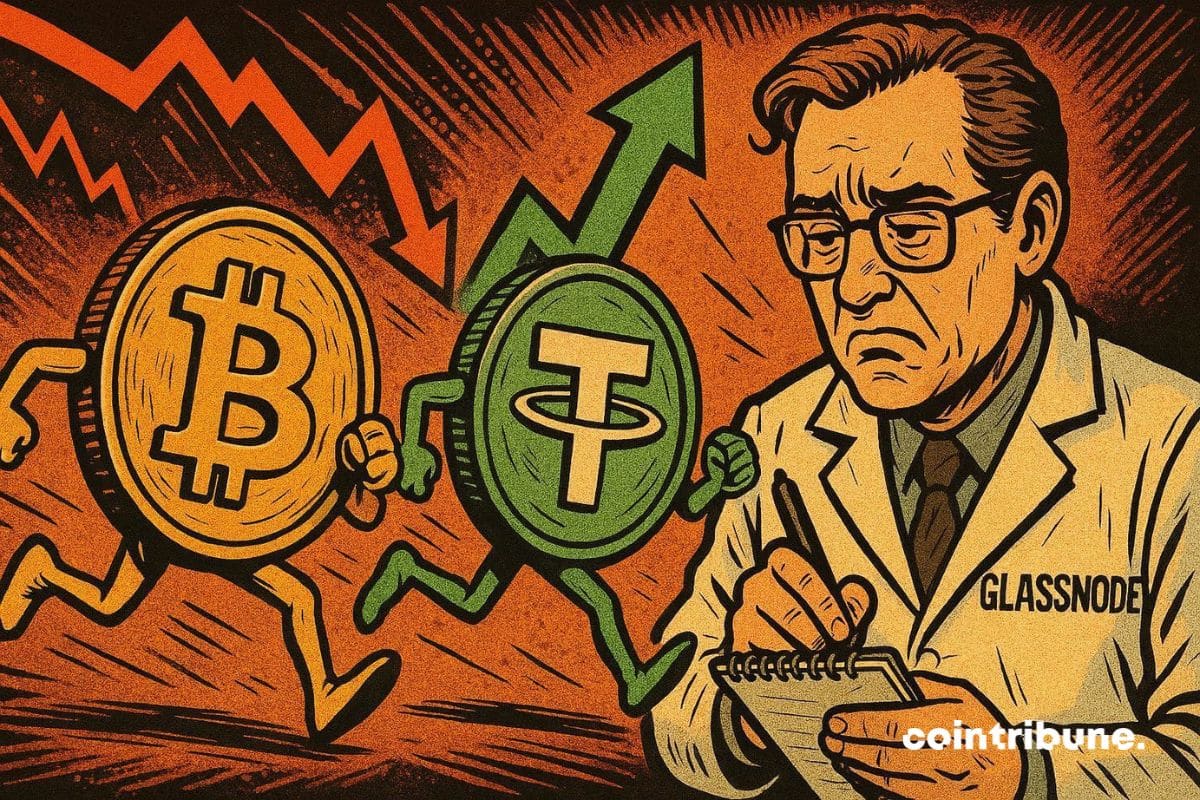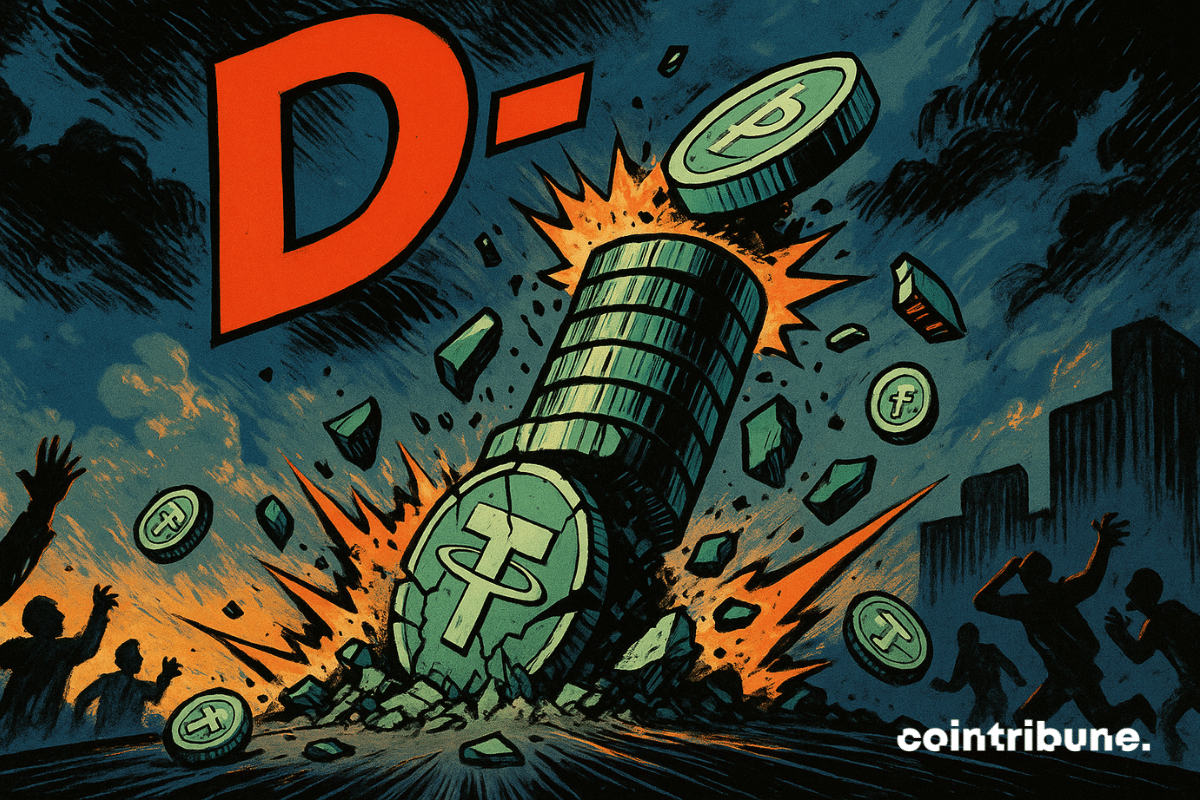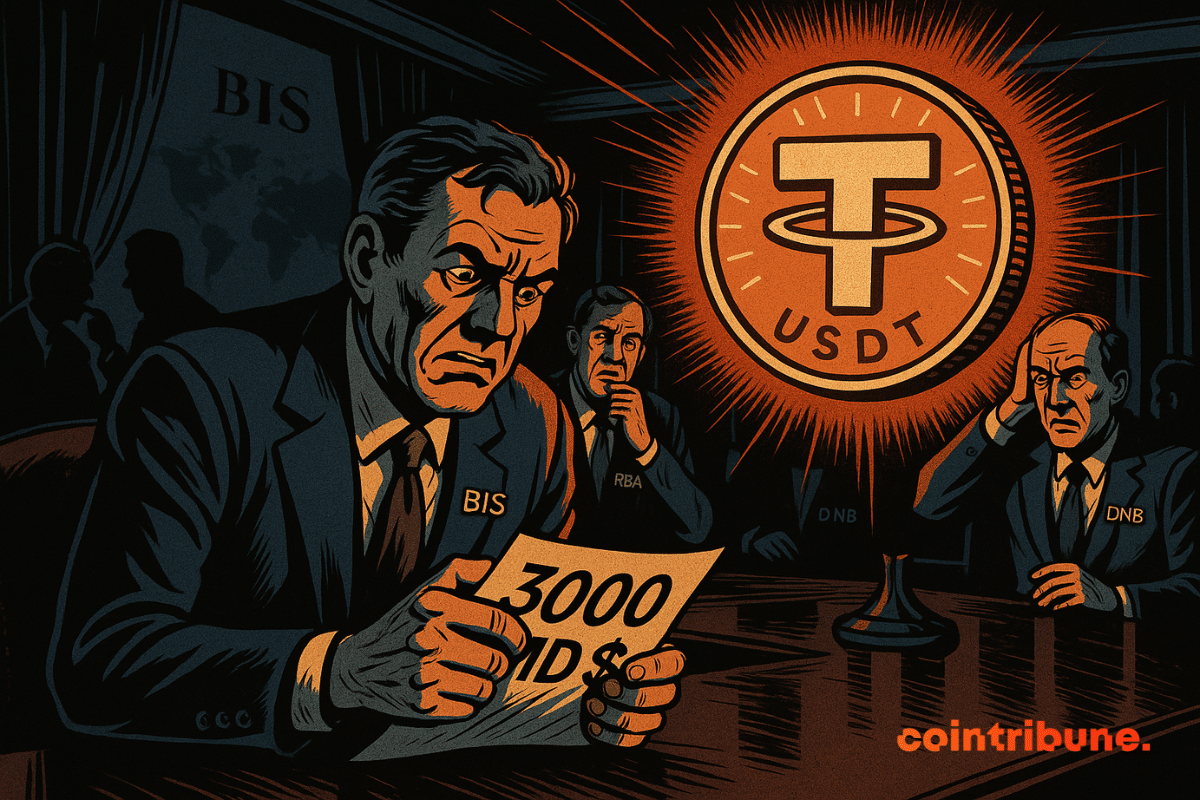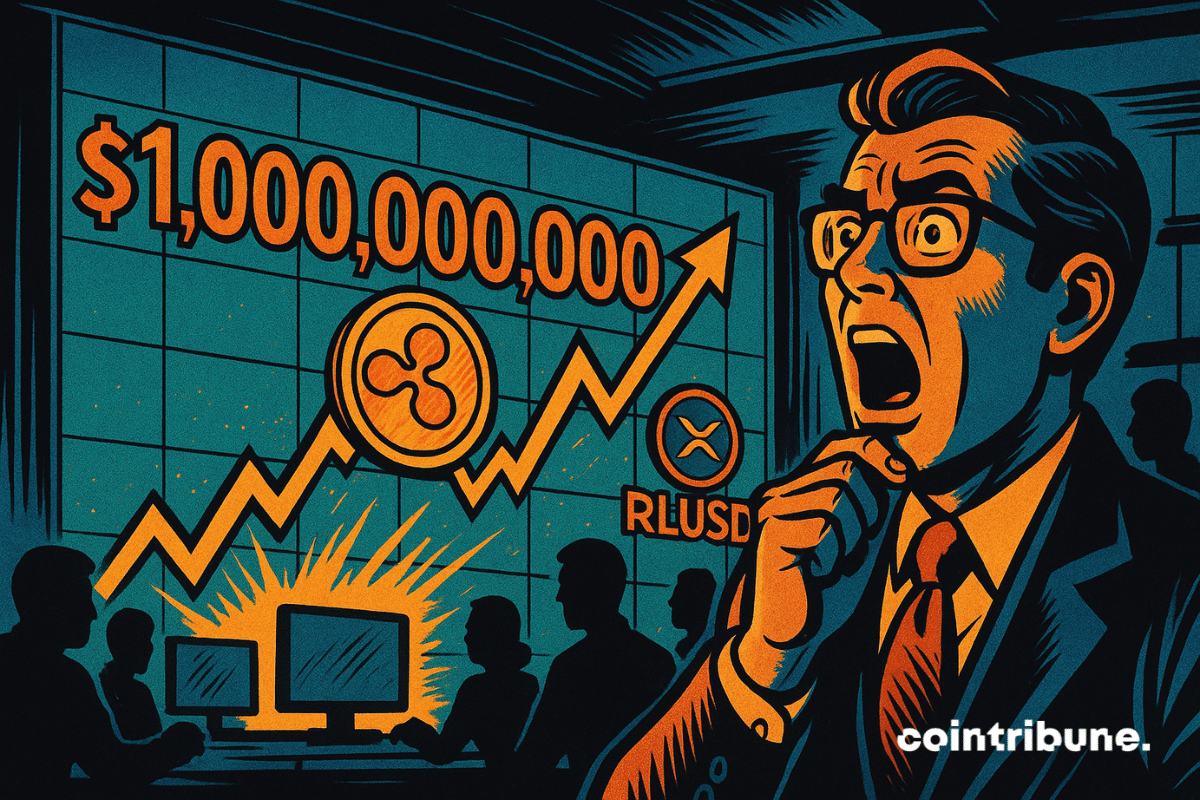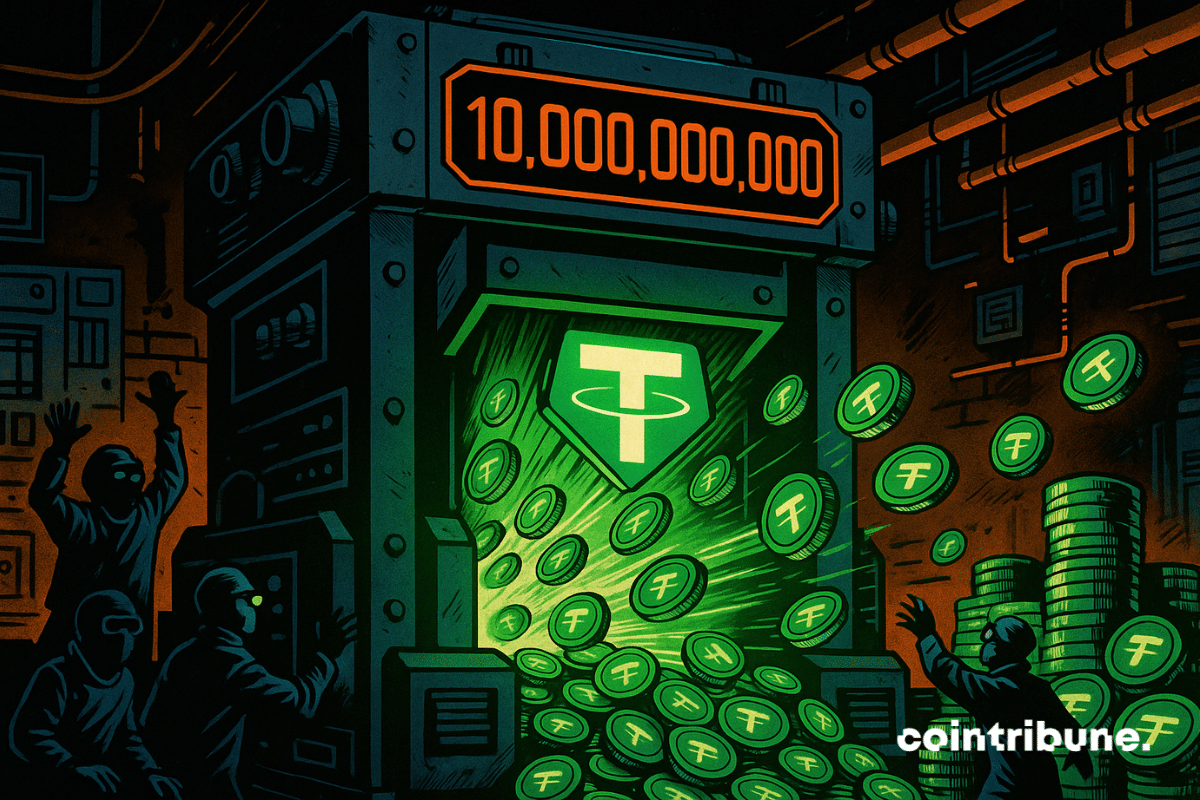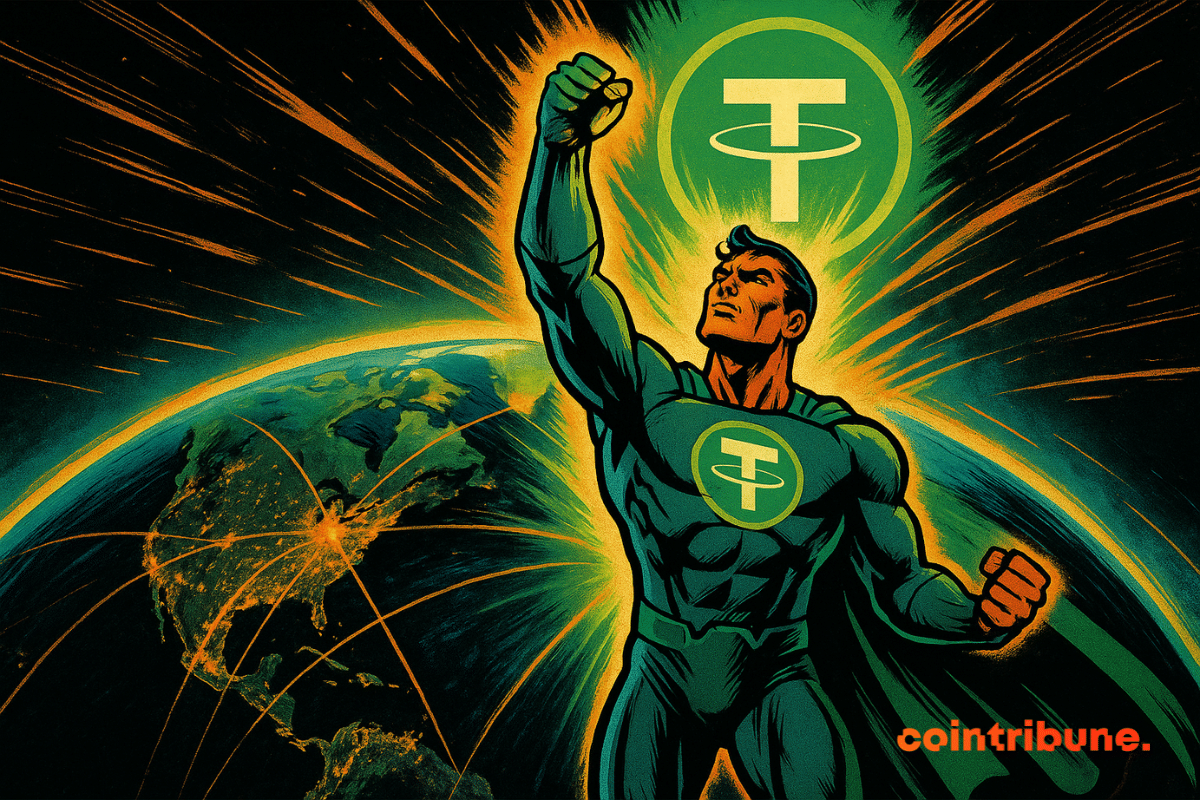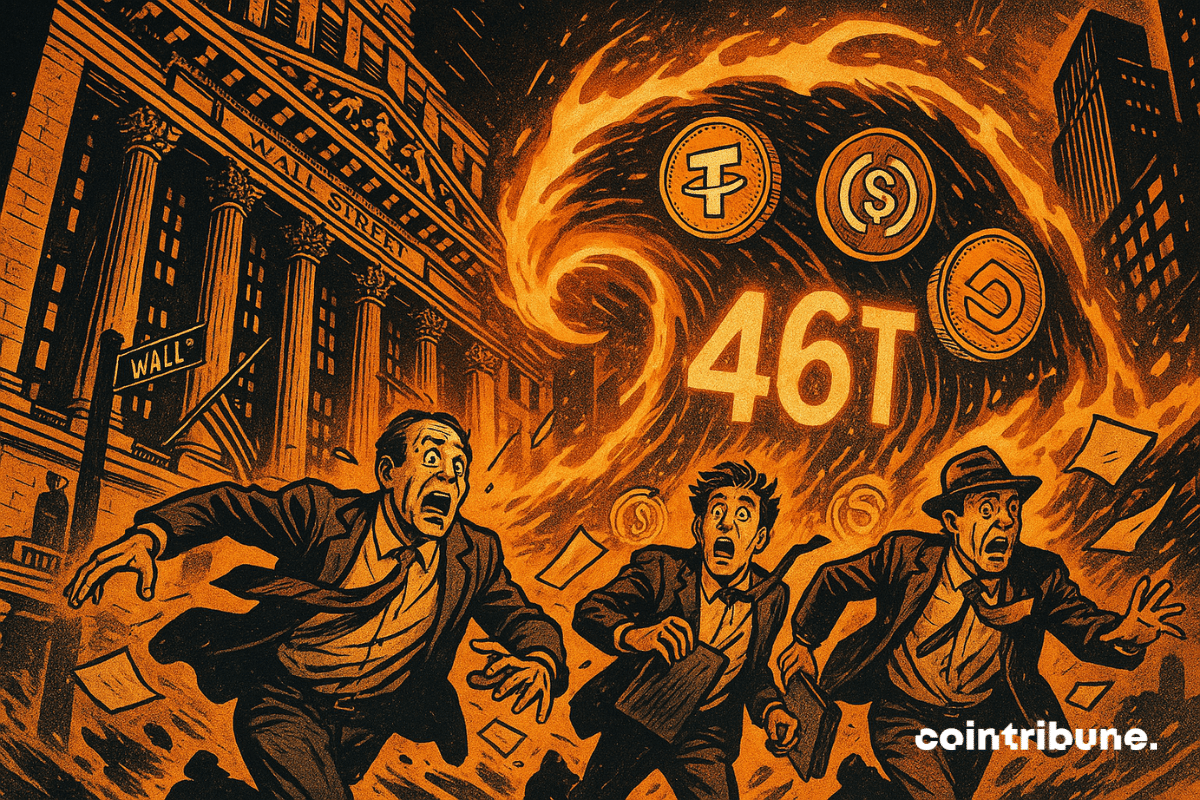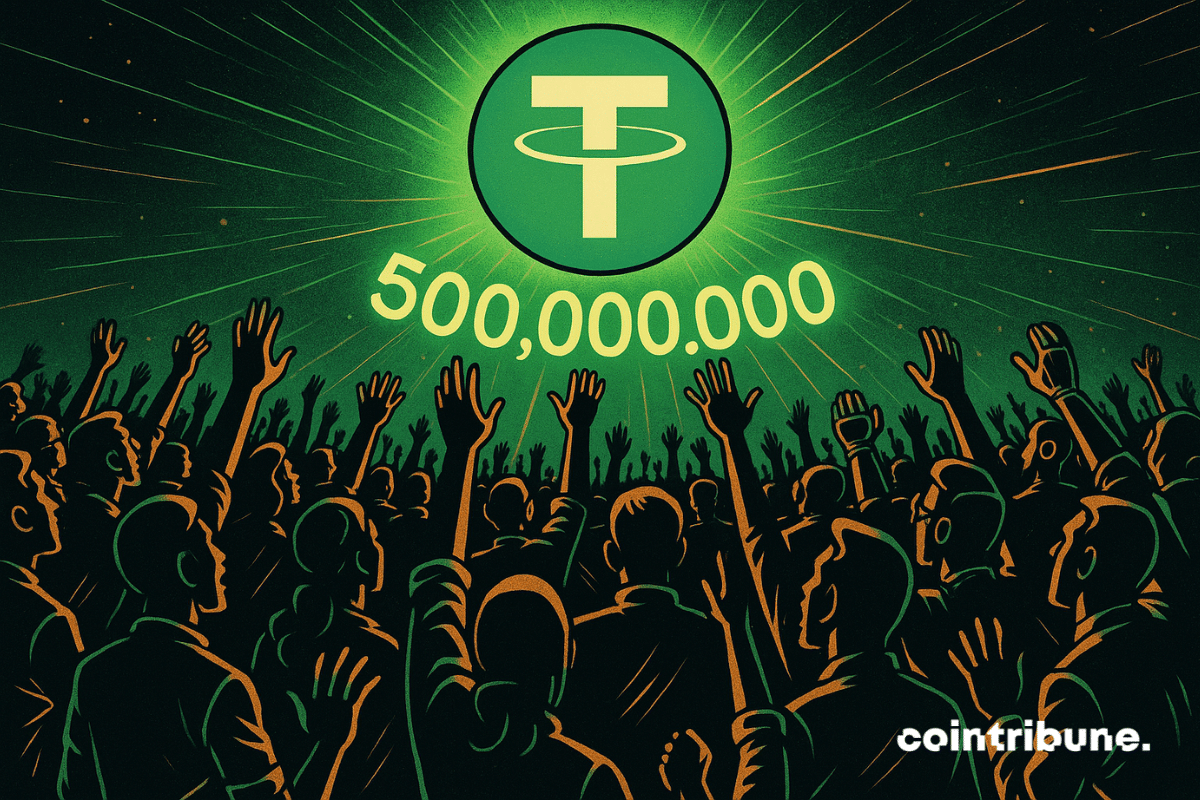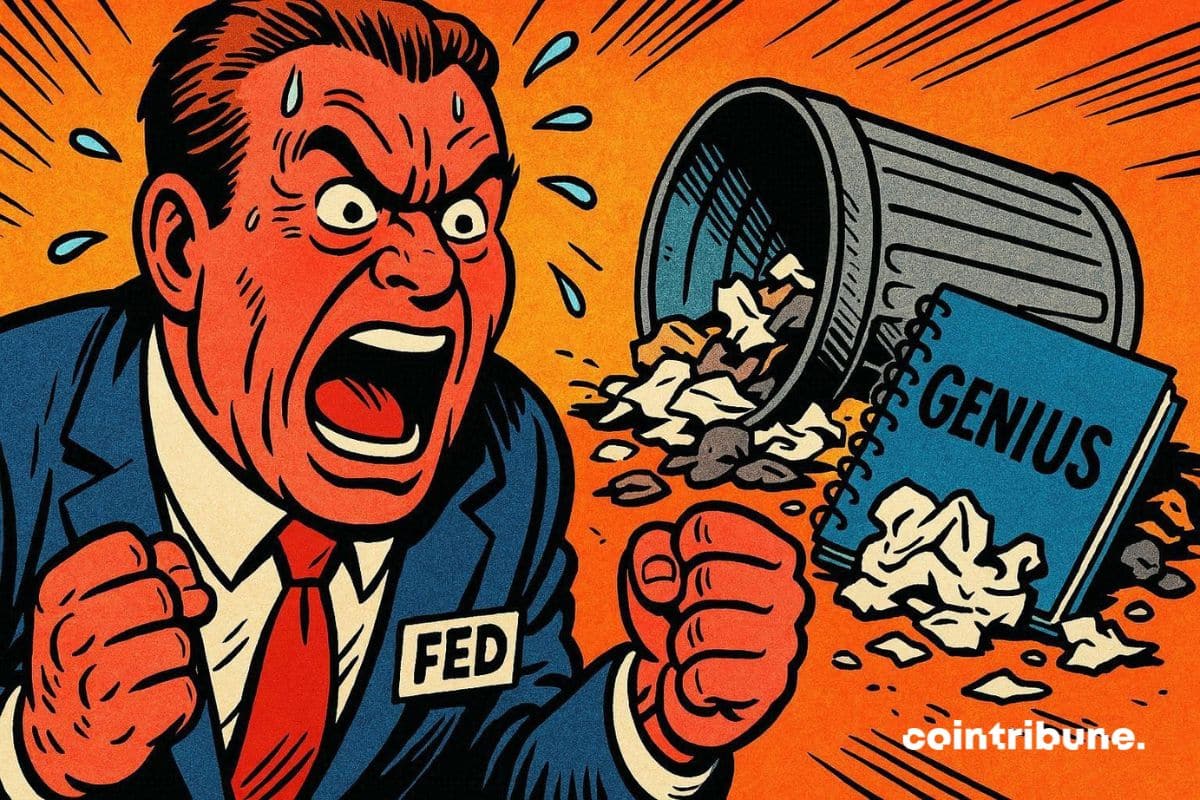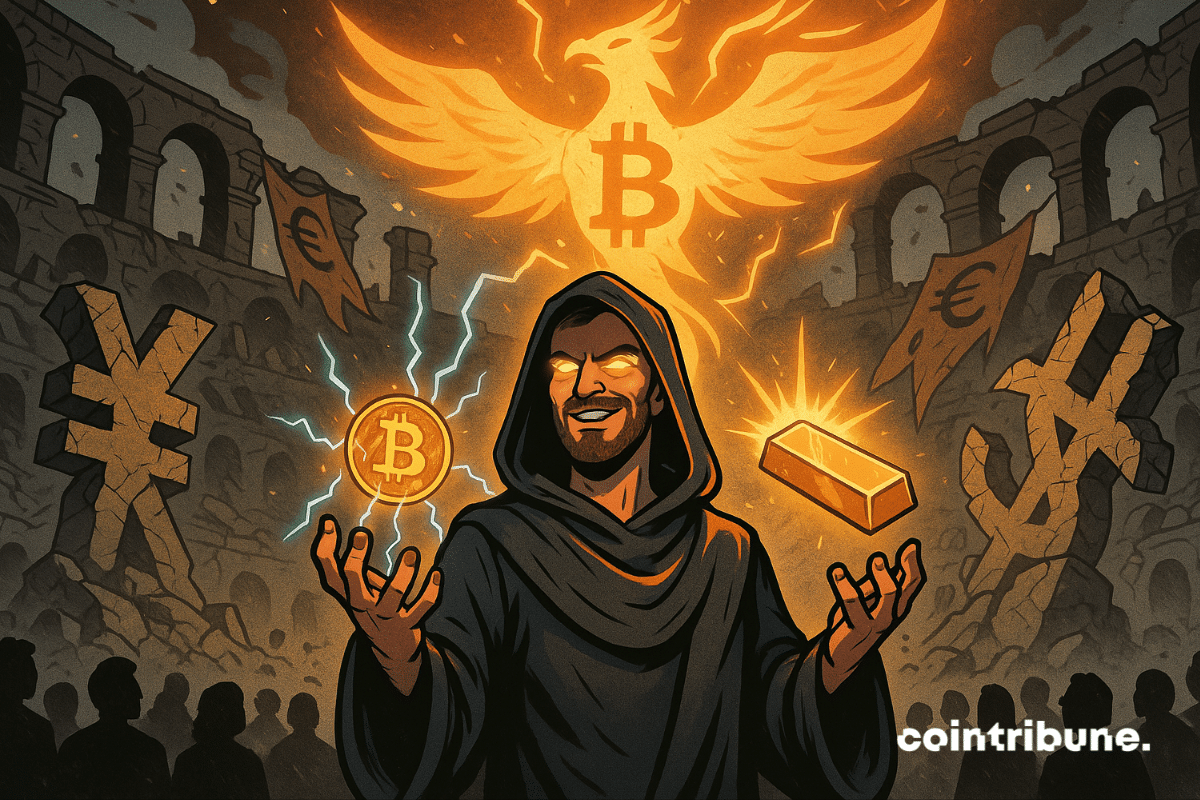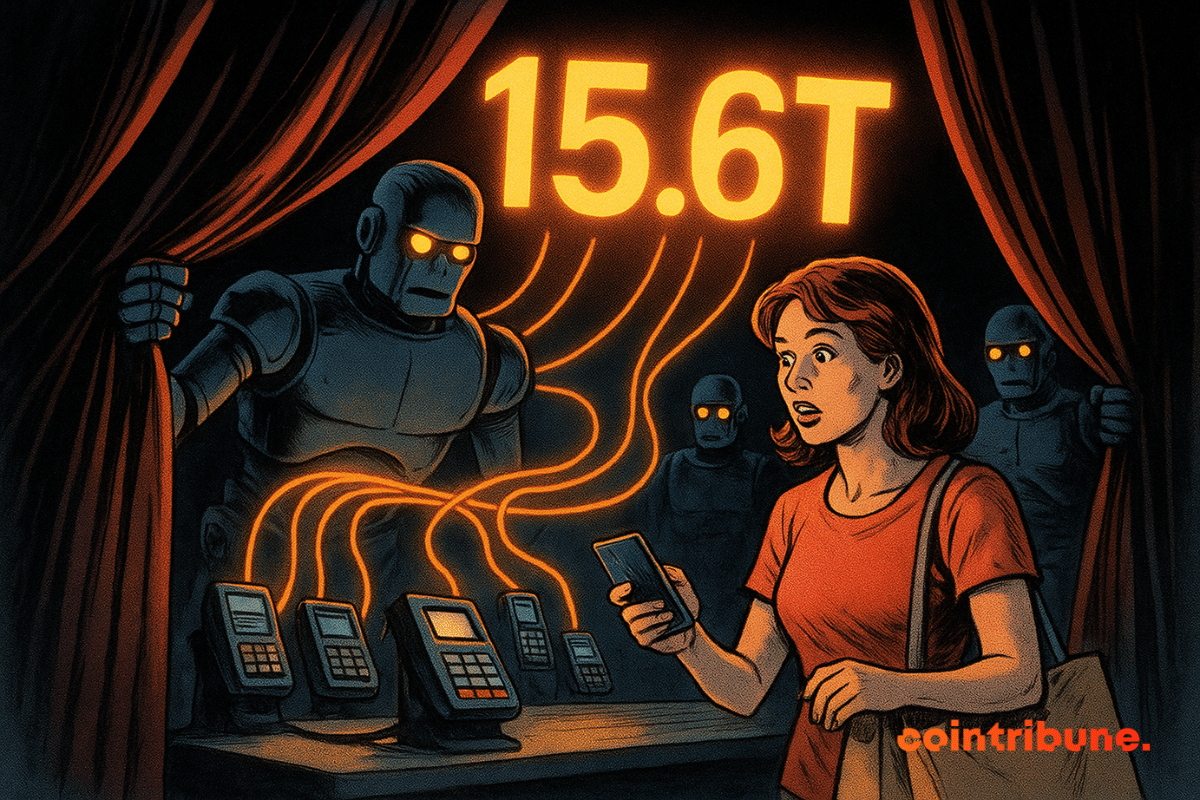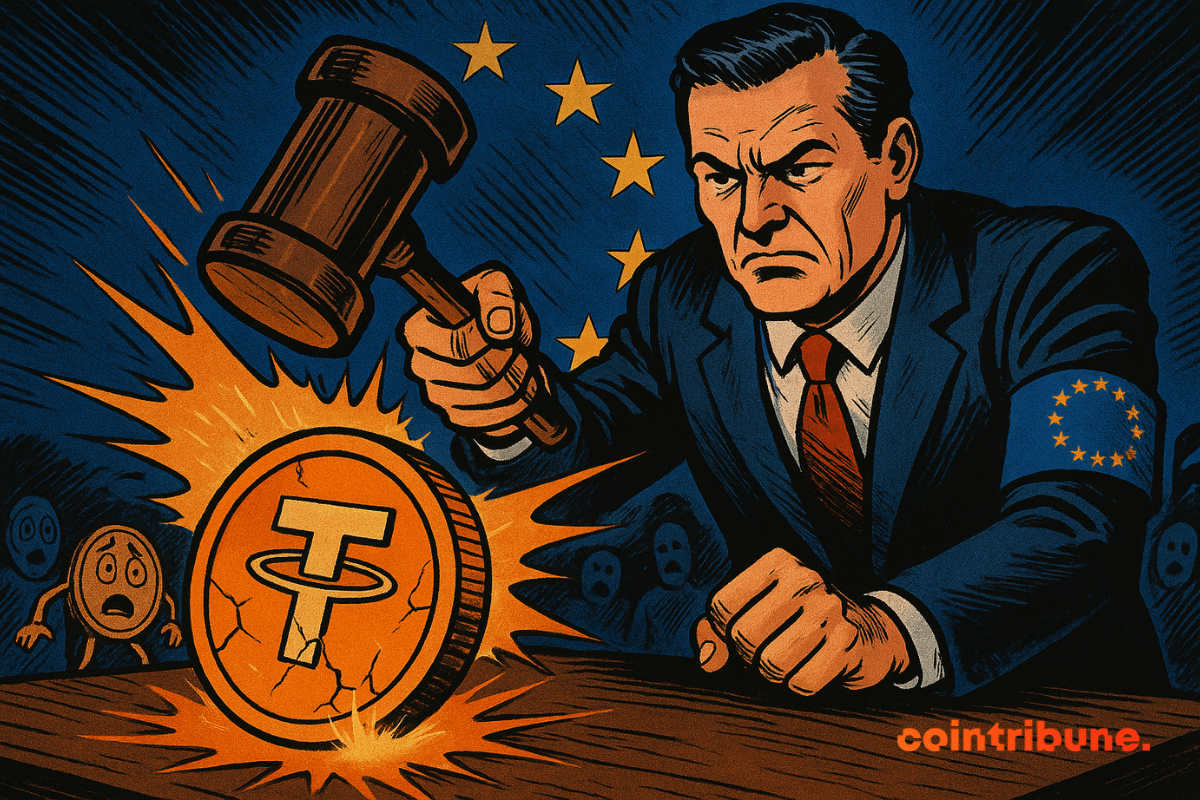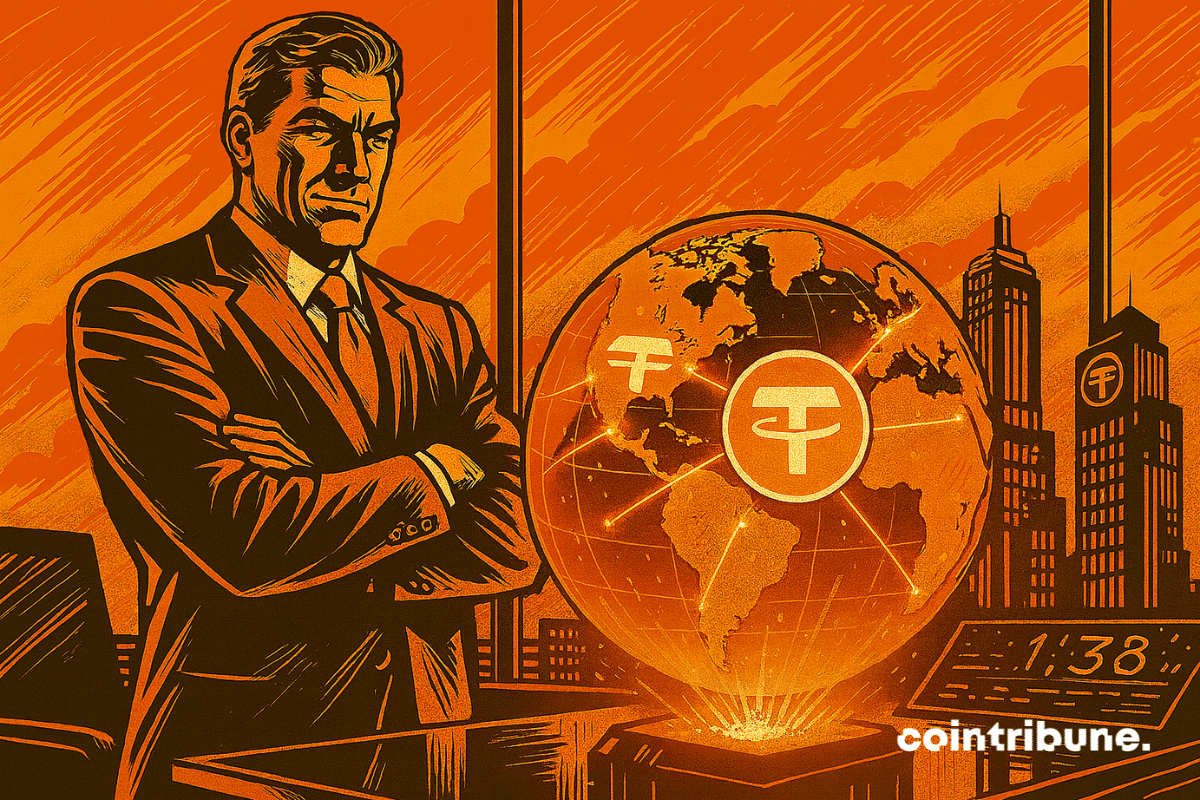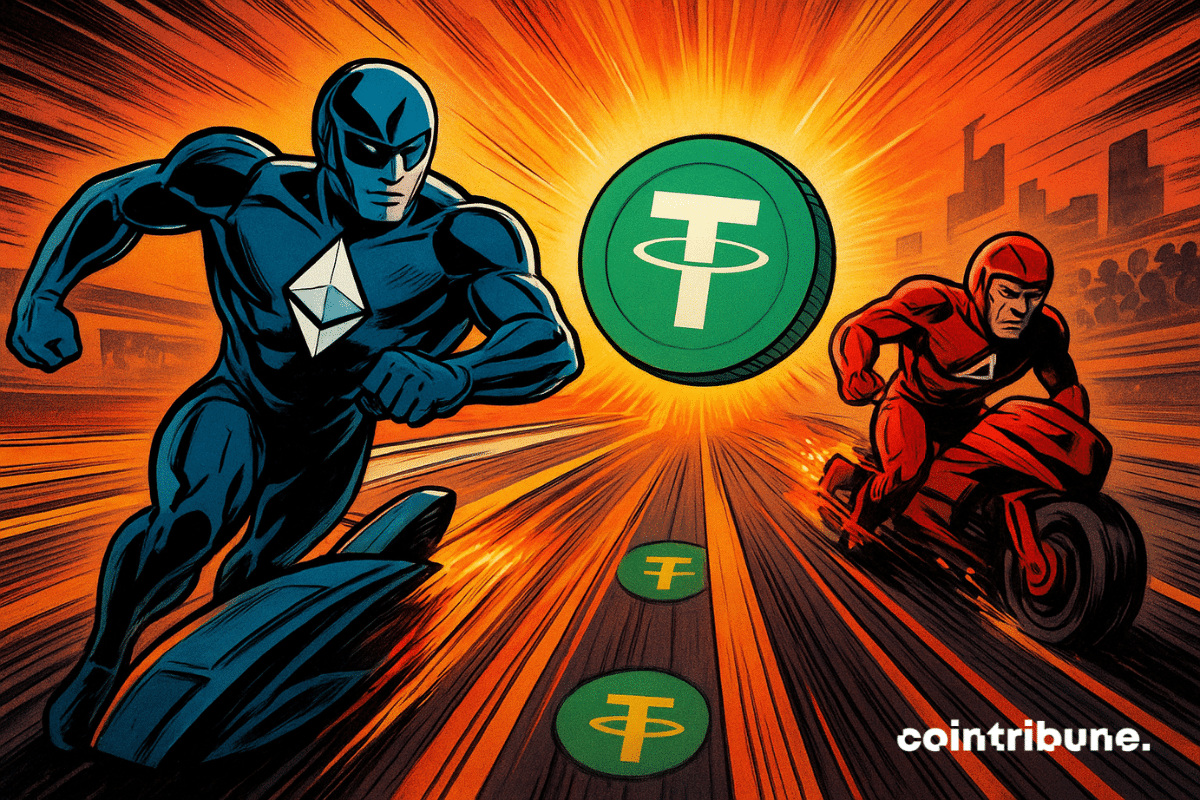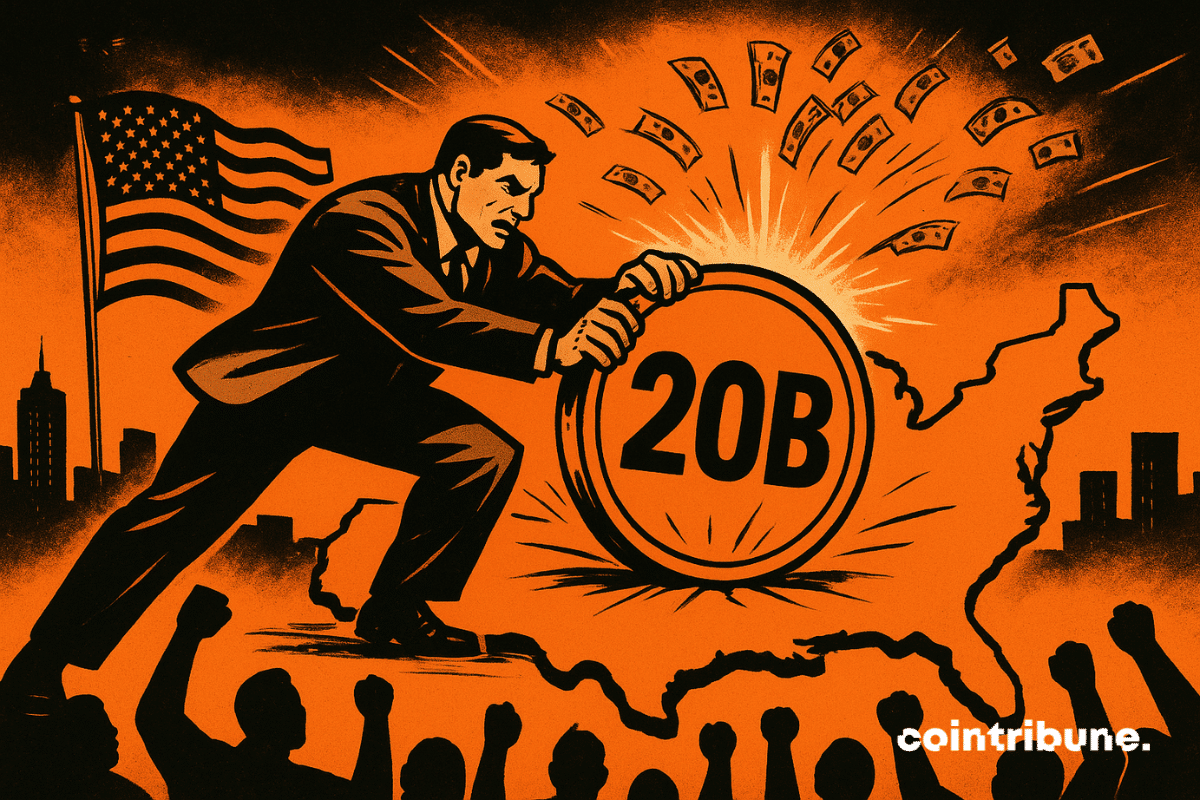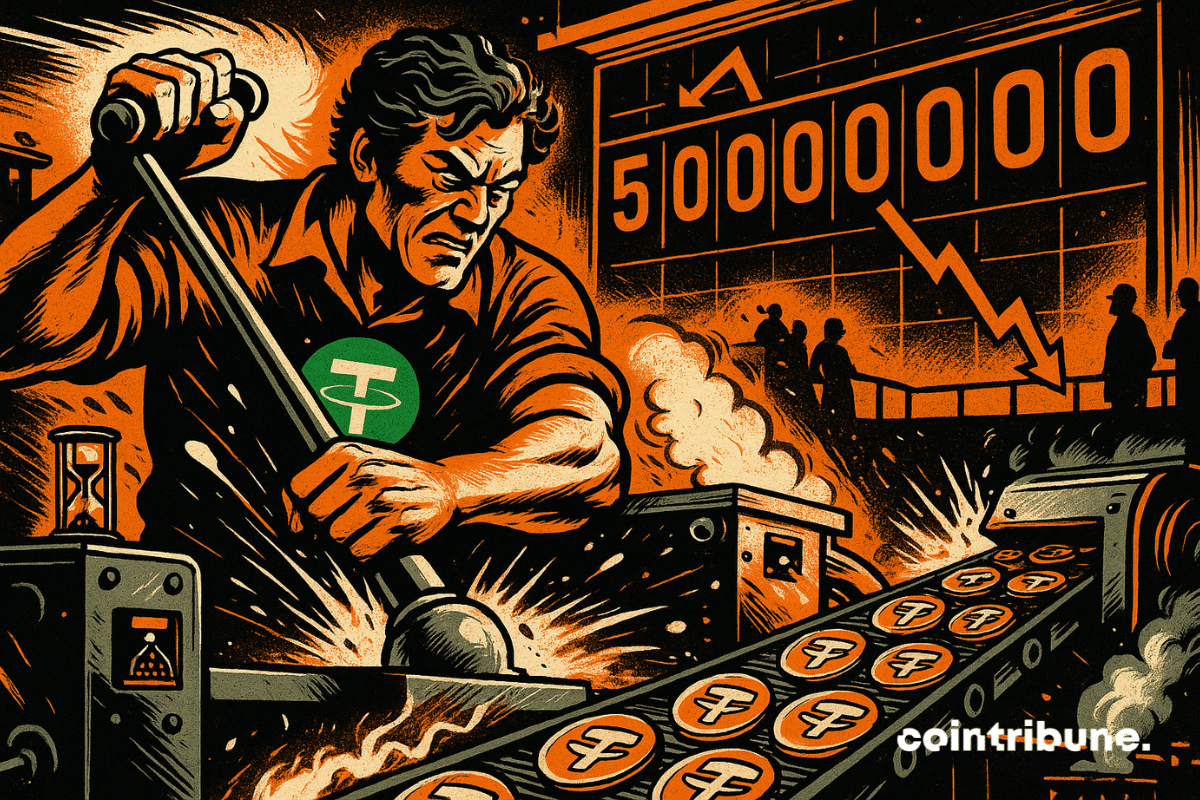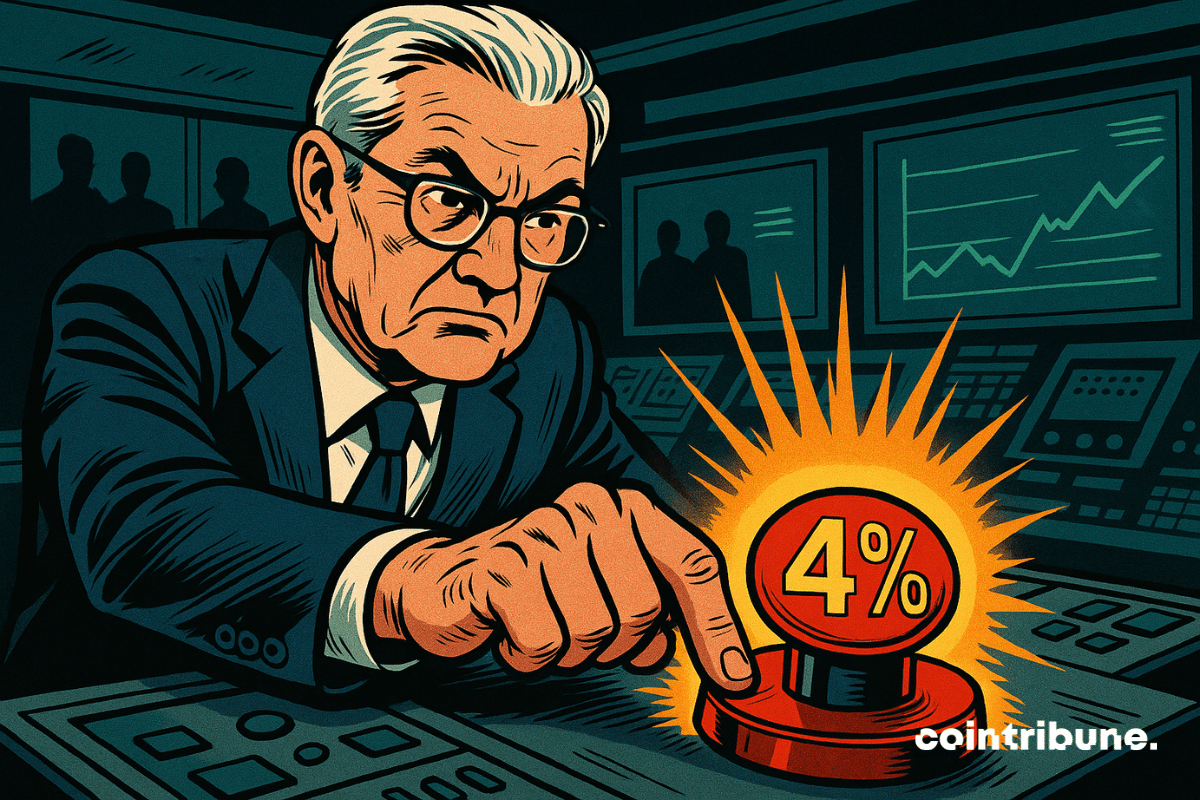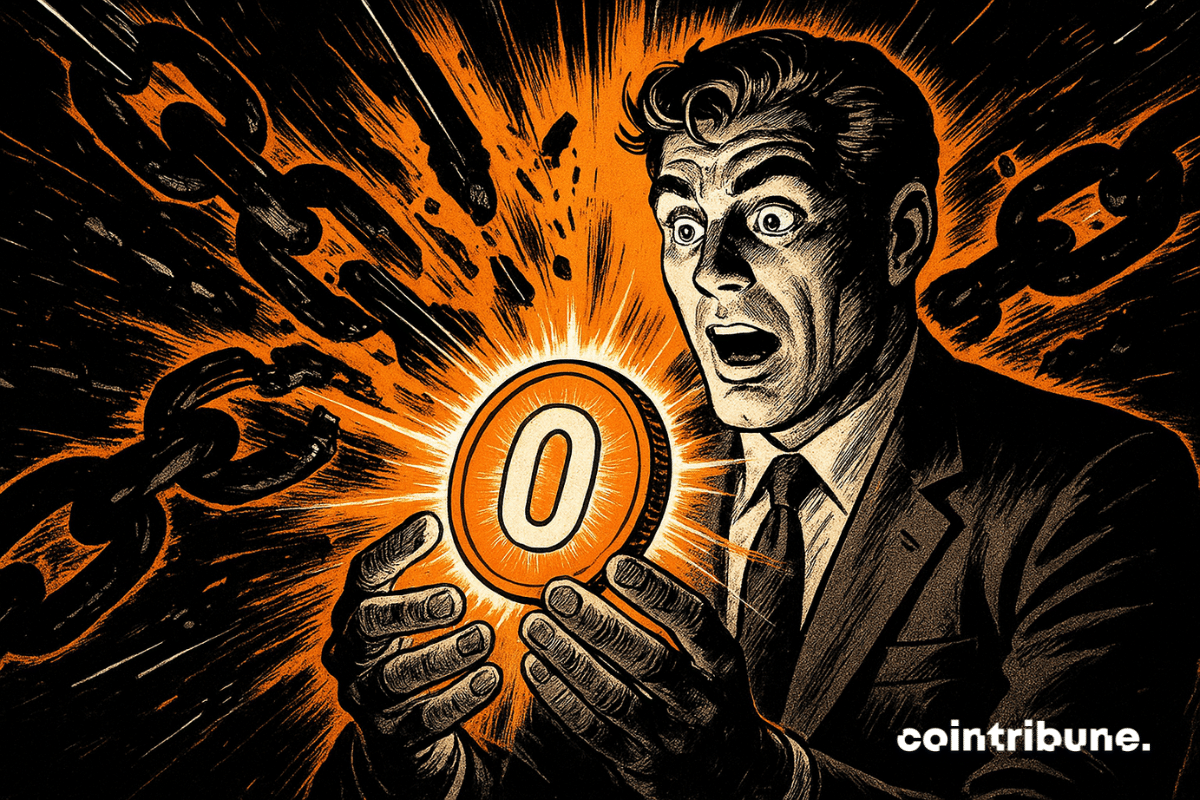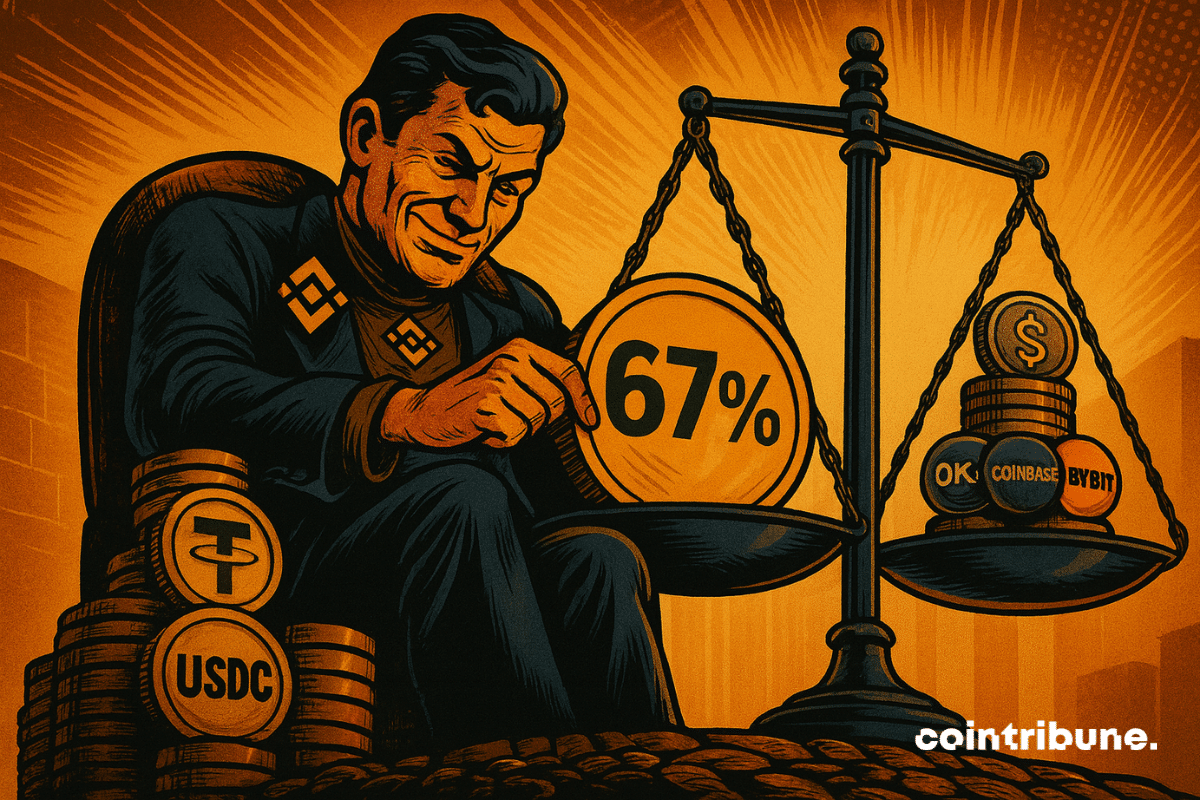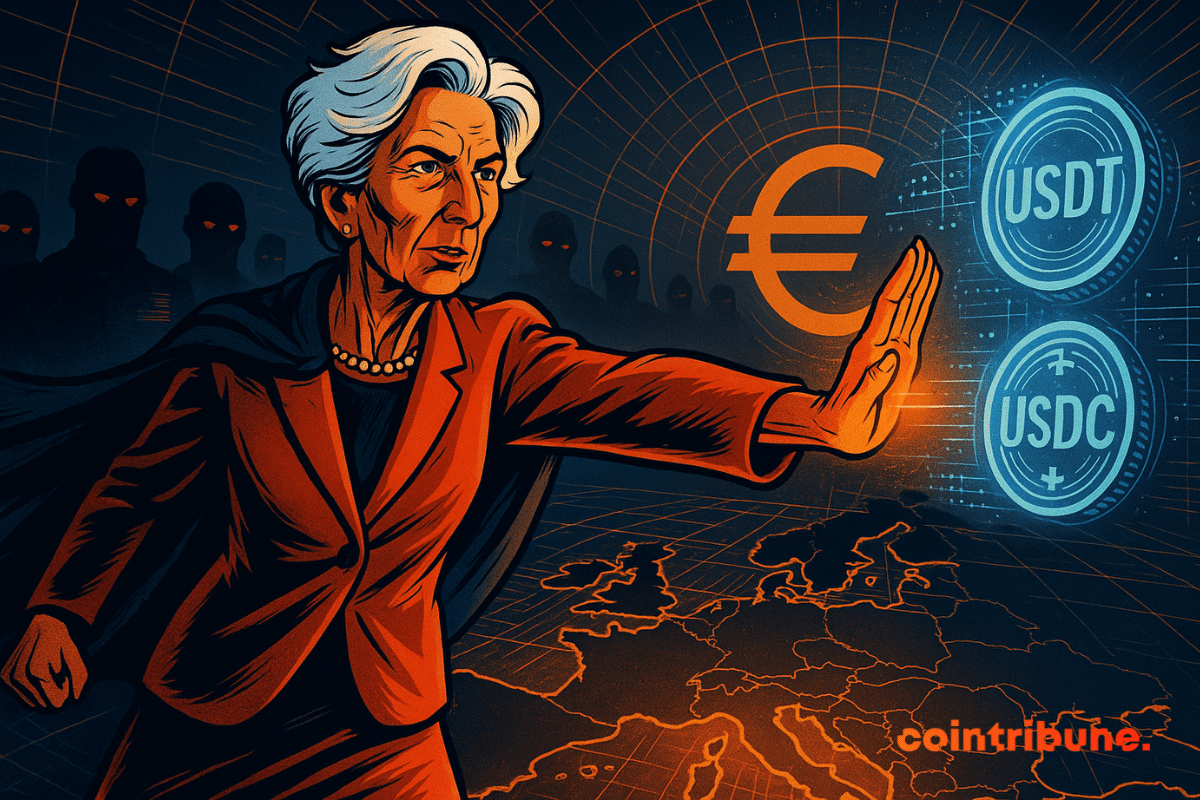While many eyes remain fixed on Bitcoin and Ether, Solana is currently playing a much subtler game. The SOL crypto still holds above the 120 dollar area, but this level is not just a technical support: it is supported by a real shift in liquidity and on-chain supply. However, trader-side demand remains surprisingly timid. And as long as this gap persists, Solana's structural advantage is not fully reflected in the price.
Tether (USDT)
The stability of the market's largest stablecoin is questioned. On November 29, the S&P agency downgraded USDT's ability to maintain its dollar peg. Tether, through its CEO Paolo Ardoino, denounces a biased analysis and defends its figures. This standoff between a central crypto player and a major financial institution reignites the debate on reserve solidity and trust in the ecosystem.
Bitcoin and USDT maintain an inverse relationship that directly influences crypto market movements. According to Glassnode, this negative correlation could well dictate the trends towards the end of 2025. An exclusive analysis that sheds light on investors' strategies and projections for December. Not to be missed.
S&P Global Ratings has just downgraded USDT to its lowest stability level. A rare decision targeting the world’s most used stablecoin and raising doubts about its ability to maintain its peg to the dollar. At a time when regulators are tightening the noose around cryptos, this evaluation revives debates on the solidity of Tether’s reserves and the systemic risks stablecoins pose to the entire market.
When tokens want to play treasury bonds, the BIS panics. Crypto-confidence or crypto-catastrophe? Finance views stablecoins as a Pandora's box ready to open.
Ripple’s US dollar–pegged stablecoin, RLUSD, has rapidly climbed the ranks to become one of the top ten stablecoins by market capitalization. Less than a year after its December 2024 launch, RLUSD has surpassed the $1 billion mark—a milestone that reflects growing confidence in Ripple’s expanding digital asset ecosystem.
Tether has just crossed a dizzying threshold: more than $10 billion in profit in just nine months. Behind this extraordinary figure lies the rise of a key player in the crypto ecosystem. Issuer of the USDT, the most used stablecoin in the world, Tether impresses as much as it raises questions. This record profitability, revealed in its latest attestation report, triggers as much enthusiasm as concerns, especially in terms of transparency and regulation.
Tether, the world’s largest stablecoin issuer, is poised for another record year of profitability, reinforcing its dominance in the digital dollar market. As the global demand for blockchain-based payment systems accelerates, the company continues to stamp its dominance in the crypto space.
Direct competitor to YouTube, Rumble is now betting on crypto to attract its content creators. In partnership with Tether, the video platform is about to launch a Bitcoin tipping system. A bold strategy that could reshuffle the cards in the creator economy. But will this initiative be enough to reverse the trend for a stock that has plummeted heavily since the beginning of the year?
Wall Street trembles, BlackRock applauds, and the dollar digitalizes without asking the Treasury's opinion… Stablecoins are taking hold, while crypto weaves its planetary monetary web.
Tether claims 500 million users for its stablecoin USDT, hitting an unprecedented milestone in digital finance. Behind this colossal figure, the company asserts its ambition: to become a pillar of global financial inclusion. As USDT establishes itself in daily use, especially in emerging economies, Tether is now extending its influence towards a new strategic area: global regulation. More than a mere record, this announcement marks the rise of a player who has become central to the monetary architecture of Web3.
The GENIUS law, presented as the solution to secure stablecoins, hides alarming flaws according to the Federal Reserve (Fed). Michael Barr sounds the alarm: systemic risks, regulatory arbitrage, and threats to your crypto investments. Are stablecoins really stable?
The third quarter of 2025 marked a major milestone for the stablecoin market, reflecting growing global adoption and institutional use. Fueled by record DeFi activity and greater regulatory clarity, stablecoins reached historic highs in both supply and transaction volume, solidifying their role as a core pillar of the digital asset economy.
Tether CEO Paolo Ardoino sees Bitcoin and gold as a hedge capable of outlasting other currencies, reflecting the company’s strategic focus.
Tether, the ace of stablecoins, dribbles right up to Juventus' board. Governance, millions, and crypto at every level: soon a blockchain-sponsored VAR?
Tether and Antalpha plan a $200 million public fund designed to invest in XAUt, Tether’s gold-backed digital token, building on their ongoing partnership and expanded token infrastructure.
Stablecoins had their busiest quarter ever in Q3 2025, with transaction volumes hitting record highs. However, a new report reveals that much of this activity came from bots rather than individual users. At the same time, small retail transfers surged to unprecedented levels, highlighting stablecoins’ dual role as a trading tool and an emerging option for everyday payments.
When Christine Lagarde brings down the regulatory hammer, even the crypto giants tremble. The digital euro advances masked but clearly targets stablecoins too comfortable in Europe...
Tether is on a trajectory that could elevate it to become the most profitable crypto company in history. All the details here!
After losing its top position to Tron in March, Ethereum has surged back to reclaim its place as the leading network for USDT, with its supply reaching $80 billion. Although both networks maintained high supply levels of roughly $75–$80 billion for most of the year, this reversal signals a key shift in infrastructure preferences.
Bloomberg sources report that Tether Holdings SA is in private discussions to raise roughly $20 billion—a move that could push the USDT stablecoin issuer’s valuation to about $500 billion. If finalized, the deal would position Tether among the world’s most highly valued private companies.
The tokenized dollar machine has been reignited. Following the 25 basis points cut decided by the Fed on September 17, Tether accelerated the issuance of USDT. In total, 5 billion minted in eight days, including an additional 1 billion on September 19 on Ethereum, according to Onchain Lens. The timing is no coincidence: when the cost of money falls, the thirst for liquidity in crypto markets rises instantly.
Powell cuts timidly, Trump shouts louder than ever, and crypto cheers. In Washington, the FED lowers its arms, while Bitcoin and stablecoins revise their choreography.
The crypto ecosystem reaches a new milestone with the revolutionary announcement from OKX partnering with Tether to deploy USDT0 on its Layer 2 X Layer network. This major innovation, launched on September 9, 2025, redefines stablecoin interoperability and positions OKX as the essential exchange for the future of decentralized finance.
Bitcoin attracts bettors, Ethereum seduces bankers, Dogecoin dreams of an ETF and Tether dresses in gold: the crypto circus continues its show, between promises, glitters and persistent doubts.
The disappearance of a few thousand bitcoins from a balance sheet is enough to fuel controversies. This weekend, the issuer of USDT found itself at the center of a media whirlwind: did it secretly sell its BTC? Some saw a strategic shift there. However, behind the seemingly worrying figures, another reality emerges, much more nuanced, and above all, revealing the discreet movements of a giant in crypto finance.
Since its creation, Ethereum (ETH) has continually surprised the markets. But the latest indicator marks an unprecedented milestone. For the first time, Ethereum's exchange balance has turned negative: in other words, more ETH leave trading platforms than enter. This rare phenomenon could be the fuel for a surge towards $7,000, according to several analysts.
In the crypto arena, Binance sits like a central banker: 67% of stablecoins under lock. Historic record, guaranteed concern, and dry powder ready to explode.
When the largest crypto company becomes a gold prospector: Tether aligns billions and mining ambitions. Ingots, royalties, and stablecoins on the menu, all seasoned with a sovereign fund flavor.
The President of the European Central Bank steps up against dollar-backed stablecoins. During a conference in Frankfurt, Christine Lagarde demanded "firm" guarantees for any foreign issuer wishing to operate in the EU. A strong signal of European fears regarding the growing influence of the greenback in cross-border digital payments.
